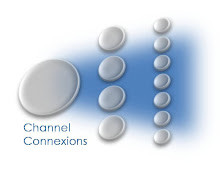It got me thinking about channel motivation and wondering if a channel relationship can just become “actualized” or if there were stages that the relationship must go through to reach Nirvana. Not being a trained psychologist, I thought of the two motivations we often see in the workplace; the carrot and the stick. Certainly, Donald Trump has used this approach for his reality show, The Apprentice. I think there is more, though. What truly motivates a channel partner is not too different than what motivates an individual:
Survival: Channels (like people) will do what it takes to survive. This often leads to a “path of least resistance” behavior. Channels will behave in a way that helps them survive. This why effective lead generation and deal registration programs are embraced by the channel. Incentive programs and channel ramp initiatives will also help satisfy the “survival” motivation.
Social Need: This is an emotional need. Channel partners want to be recognized in their communities and business circles as successful and thriving business practices. Their success is directly related to the perception of their customers and partners. Channels have a social motivation. Channel designation programs, for example, offer a recognition brand for their excellence. The reason many companies offer a tiered designation structure is to motivate their partners to invest in the relationship and gain the next level of designation.
Need to be Valued: As I have mentioned previously, channel partners want to be engaged and involved. They want their input on product and solution development, marketing programs, and service level agreements to be heard and valued by the vendor. The community of Linux developers and contributors to Wikipedia are emotionally connected to these products and services because they feel valued. Companies that embrace this “need to be valued” motivation through engagement programs (similar to the trends in channel education), will benefit by creating an emotional connection with their partners; ultimately creating switching costs.
Channel-Actualization: The Utopian channel relationship is one in which there is mutual commitment, mutual growth, mutual profitability, and brand between the channel and the vendor. As Maslow would describe it…the relationship is everything that is can be. Of course, this is a state where there is perfect communication, action, and results.
The Channel Hierarchy of Motivations would look something like this:

The goal in building channel motivation campaigns should be to reach the top by building a suite of programs and initiatives designed to move your partners up the hierarchy. Focusing exclusively on the lower stages is table stakes as this is where your competitors are also focusing their efforts.
Disclaimer: I apologize for the psycho-babble in this post. Perhaps it sounds a bit “too fluffy”, but I do think that you have to go beyond incentive programs and lead generation to truly motivate your partner community. Would welcome your thoughts…




No comments:
Post a Comment